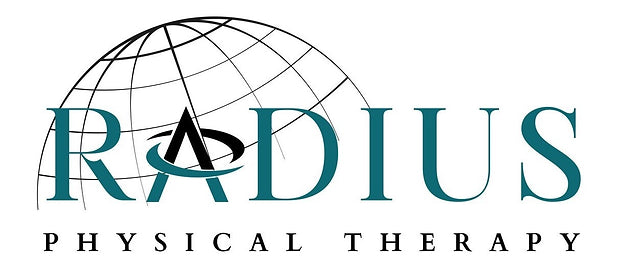Running is not just a sport; it's a way of life for many. It embodies passion, discipline, and for marathon enthusiasts, an unyielding spirit in the pursuit of excellence. However, this rigorous activity also comes with a significant risk of injuries that can hamper progress and dash marathon dreams. In the serene town of Moody, AL, Dr. Joey Bemowski and his team at Radius Physical Therapy stand as the beacon of hope for runners, offering not just rehabilitation services but a comprehensive approach to injury prevention. For those lacing up for the long run, here’s how you can avoid the common pitfalls that may leave you sidelined.
Understanding the Anatomy of a Running Injury
Before we hit the ground running with prevention tips, it's crucial to understand what causes the most common running injuries. These often stem from a combination of overuse, poor form, inadequate warm-up routines, and unsuitable footwear. Dr. Bemowski emphasizes the importance of recognizing "warning signs" such as persistent aches or tightness, which may indicate an underlying issue that requires attention.
Examples of Running Injuries That Marathoners Face
- Runner's Knee (Patellofemoral Pain): Characterized by pain behind or around the kneecap, runner's knee can significantly disrupt training regimes.
- IT Band Syndrome: Impaired function of the iliotibial (IT) band, a band of tough tissue that runs from the hip down to the shin, can lead to pain on the outside of the knee.
- Shin Splints: Sharp pain along the inner edge of the shinbone, due to inflammation of the muscles, tendons, and bone tissue.
The Foundation: Technique and Warm-Up Exercises
Proper running technique can minimize impact and reduce strain on key muscle groups. Poor form can lead to a number of injuries, especially over long distances. In addition, a solid warm-up routine prepares your body for the physical stress of a run, making you less prone to injury.
Tips for Maintaining Good Form
- Foot Strike: Land mid-foot, not on your heels, to dissipate the forces generated by running.
- Cadence: Aim for a cadence of approximately 180 steps per minute to reduce the time each foot spends on the ground, which may decrease the risk of injury.
- Posture and Alignment: Keep your body upright, engage your core, and look forward, rather than hunched over and downward.
Dynamic Warm-Up Exercises
- Leg Swings: Stand next to a wall for balance and swing one leg forward and backward, then side-to-side, 10 to 15 times.
- High Knees: As you jog in place, lift your knees to hip level, maximizing the range of motion.
- Lunges: Perform walking lunges to stretch your hip flexors and glutes.
Building Resilience: Strength and Flexibility Training
A strong and flexible body is your best insurance against injuries. Incorporating strength training and regular stretching into your routine can correct imbalances and improve your body's ability to handle the demands of running.
Key Strength Training Exercises for Runners
- Squats: Strengthen your quads, glutes, and hamstrings, all crucial for powering through those miles.
- Deadlifts: Work on your hip stability and strengthen your lower back and hamstrings.
- Calf Raises: Build strength in your calves to help push off the ground and stabilize your ankle.
The Importance of Stretching
Dynamic and static stretching can enhance your range of motion, improve blood flow to muscles, and prevent tightness that may lead to injury.
- Dynamic Stretching: Perform controlled leg swings and lunges to mimic running movements, preparing your muscles for activity.
- Static Stretching: Hold typical stretches for 20-30 seconds to lengthen and relax the muscles post-activity.
Environmental Factors: Terrain and Weather
Running surfaces can greatly influence injury risk. Hard surfaces like pavement can be unforgiving on your joints, while irregular terrain can challenge your balance and stability. The weather, too, plays a role; hot and humid conditions can lead to dehydration and decrease your ability to cool your body.
Selecting the Right Running Route
- For Long Runs: Opt for softer surfaces like trails or dirt roads to reduce the impact on your body.
- For Speed Workouts: A consistent, flat track can help maintain a consistent pace and form.
Weather Preparation Tips
- Hydration: Always carry water in warmer weather and consider the use of a hydration pack for longer runs.
- Sun Protection: Use sunblock, wear a cap, and use sunglasses to shield yourself from UV rays.
The Role of Equipment: From Shoes to Tech Gear
Your choice of running equipment can significantly influence your risk of injury. Ill-fitting or worn-out shoes can lead to a host of problems, from blisters to plantar fasciitis. Technical gear, such as GPS watches, can help monitor and adjust your running habits for better injury prevention.
Shoe Selection and Maintenance
- Proper Fit: Visit a running store to be fitted for shoes that match your gait and foot strike pattern.
- Replacement Schedule: Keep track of the mileage on your shoes and replace them every 300-500 miles, as cushioning and support wear out over time.
The Benefits of Running Gadgets
- GPS Watches: Monitor your pace, distance, and heart rate, helping you maintain a sustainable and injury-free running regimen.
- Reflective Gear: Stay visible during low-light conditions, reducing the risk of collisions and injuries.
Recovery: The Key to Injury Prevention
Rest and recovery are just as important as training itself. They allow your muscles to repair and grow stronger, reducing the risk of overuse injuries. Incorporating regular rest days, cross-training, massage, and proper nutrition are all critical components of a well-rounded recovery plan.
Active Recovery Strategies
- Low-Impact Activities: Engage in activities like swimming or cycling to promote circulation and keep your muscles active without the stress of running.
- Foam Rolling: Use a foam roller to perform self-myofascial release, targeting tight spots in your muscles to aid recovery.
Nutritional Considerations
- Hydration: Drink plenty of water to support muscle function and recovery.
- Protein Intake: Consume protein-rich foods to repair and rebuild muscle tissue.
Partnering with a Physical Therapist
For serious runners, a partnership with a physical therapist can be the difference between temporary setbacks and long-term progress. Dr. Joey Bemowski stands out as a go-to resource for runners in Moody, AL, offering bespoke treatment plans and one-on-one attention to address running-related issues.
The Benefits of One-on-One Attention
- Personalized Approach: A dedicated physical therapist can tailor a program to your specific needs and goals.
- Injury Rehabilitation: If an injury does occur, working with a physical therapist ensures you receive the appropriate treatment to heal and return to running.
In conclusion, marathon training doesn't have to be a risky business. By incorporating these strategies—understanding the causes of running injuries, maintaining proper form, strengthening and stretching your body, respecting environmental factors, choosing the right equipment, and emphasizing recovery—you can increase your chances of crossing the finish line injury-free. Remember, the path to marathon success is paved not only with miles but with wisdom and balanced preparation. Dr. Joey Bemowski and his team at Radius Physical Therapy can guide you through the journey, ensuring that each stride brings you closer to your goals.

